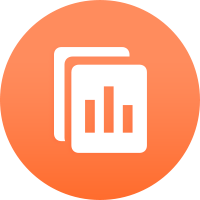
2025-02-28 18:18
NgànhAdvanced Forex HFT Risk Management Techniques with
#AITradingAffectsForex
Advanced Forex HFT Risk Management Techniques with AI.
AI can significantly enhance risk management practices in High-Frequency Trading (HFT) within the Forex market, enabling firms to detect, monitor, and mitigate various types of trading risks more effectively. Advanced Forex HFT risk management techniques empowered by AI include:
1. Real-time Market Surveillance: AI-powered systems can monitor real-time market data, news feeds, and social media platforms to detect early signs of market stress, volatility spikes, or disruptive events that could impact HFT strategies.
2. Predictive Risk Analytics: By analyzing historical data and identifying patterns, AI models can forecast potential risk scenarios and their likelihoods, helping traders anticipate and prepare for possible risk events.
3. Algorithmic Risk Controls: AI algorithms can automatically enforce pre-defined risk limits, such as position sizes, stop-loss orders, or drawdown constraints, ensuring HFT strategies adhere to risk management policies.
4. Portfolio Stress Testing: AI-driven stress testing tools can simulate HFT portfolio performance under various adverse market scenarios, enabling traders to assess their strategies' resilience and adjust risk parameters accordingly.
5. Liquidity Risk Management: AI models can analyze market liquidity data to identify periods of low liquidity or increased volatility that may pose risks for HFT strategies. This allows traders to adjust their trading tactics or temporarily pause trading to avoid excessive slippage or execution risks.
6. Counterparty Risk Monitoring: AI-powered systems can analyze counterparty data to assess credit risk, settlement risk, or other risks associated with trading partners, helping HFT firms manage their counterparty exposures.
7. Regulatory Compliance Monitoring: AI algorithms can help ensure compliance with relevant regulatory requirements, such as trade reporting, market manipulation rules, or position limits, by automatically monitoring trading activities and flagging potential compliance issues.
In conclusion, incorporating AI into Forex HFT risk management practices enables firms to detect, monitor, and mitigate various trading risks more effectively. By leveraging AI-driven techniques, HFT firms can enhance their risk management capabilities and navigate the complex and dynamic foreign exchange market with greater confidence and resilience.
Thích 0
FX2274045478
Trader
Bình luận phổ biến
Ngành
Có cao quá k?
Ngành
Xin ý kiến liberforex
Ngành
Đầu tư CDG
Ngành
Cắt lỗ
Ngành
Có nên chốt lỗ?
Ngành
Hỏi về dòng tiền
Phân loại diễn đàn

Nền tảng

Triển lãm

IB

Tuyển dụng

EA

Ngành

Chỉ số thị trường

Chỉ số
Advanced Forex HFT Risk Management Techniques with
 Bangladesh | 2025-02-28 18:18
Bangladesh | 2025-02-28 18:18#AITradingAffectsForex
Advanced Forex HFT Risk Management Techniques with AI.
AI can significantly enhance risk management practices in High-Frequency Trading (HFT) within the Forex market, enabling firms to detect, monitor, and mitigate various types of trading risks more effectively. Advanced Forex HFT risk management techniques empowered by AI include:
1. Real-time Market Surveillance: AI-powered systems can monitor real-time market data, news feeds, and social media platforms to detect early signs of market stress, volatility spikes, or disruptive events that could impact HFT strategies.
2. Predictive Risk Analytics: By analyzing historical data and identifying patterns, AI models can forecast potential risk scenarios and their likelihoods, helping traders anticipate and prepare for possible risk events.
3. Algorithmic Risk Controls: AI algorithms can automatically enforce pre-defined risk limits, such as position sizes, stop-loss orders, or drawdown constraints, ensuring HFT strategies adhere to risk management policies.
4. Portfolio Stress Testing: AI-driven stress testing tools can simulate HFT portfolio performance under various adverse market scenarios, enabling traders to assess their strategies' resilience and adjust risk parameters accordingly.
5. Liquidity Risk Management: AI models can analyze market liquidity data to identify periods of low liquidity or increased volatility that may pose risks for HFT strategies. This allows traders to adjust their trading tactics or temporarily pause trading to avoid excessive slippage or execution risks.
6. Counterparty Risk Monitoring: AI-powered systems can analyze counterparty data to assess credit risk, settlement risk, or other risks associated with trading partners, helping HFT firms manage their counterparty exposures.
7. Regulatory Compliance Monitoring: AI algorithms can help ensure compliance with relevant regulatory requirements, such as trade reporting, market manipulation rules, or position limits, by automatically monitoring trading activities and flagging potential compliance issues.
In conclusion, incorporating AI into Forex HFT risk management practices enables firms to detect, monitor, and mitigate various trading risks more effectively. By leveraging AI-driven techniques, HFT firms can enhance their risk management capabilities and navigate the complex and dynamic foreign exchange market with greater confidence and resilience.
Thích 0
Tôi cũng muốn bình luận.
Đặt câu hỏi
0bình luận

Chưa có người bình luận, hãy là người bình luận đầu tiên

Đặt câu hỏi
Chưa có người bình luận, hãy là người bình luận đầu tiên